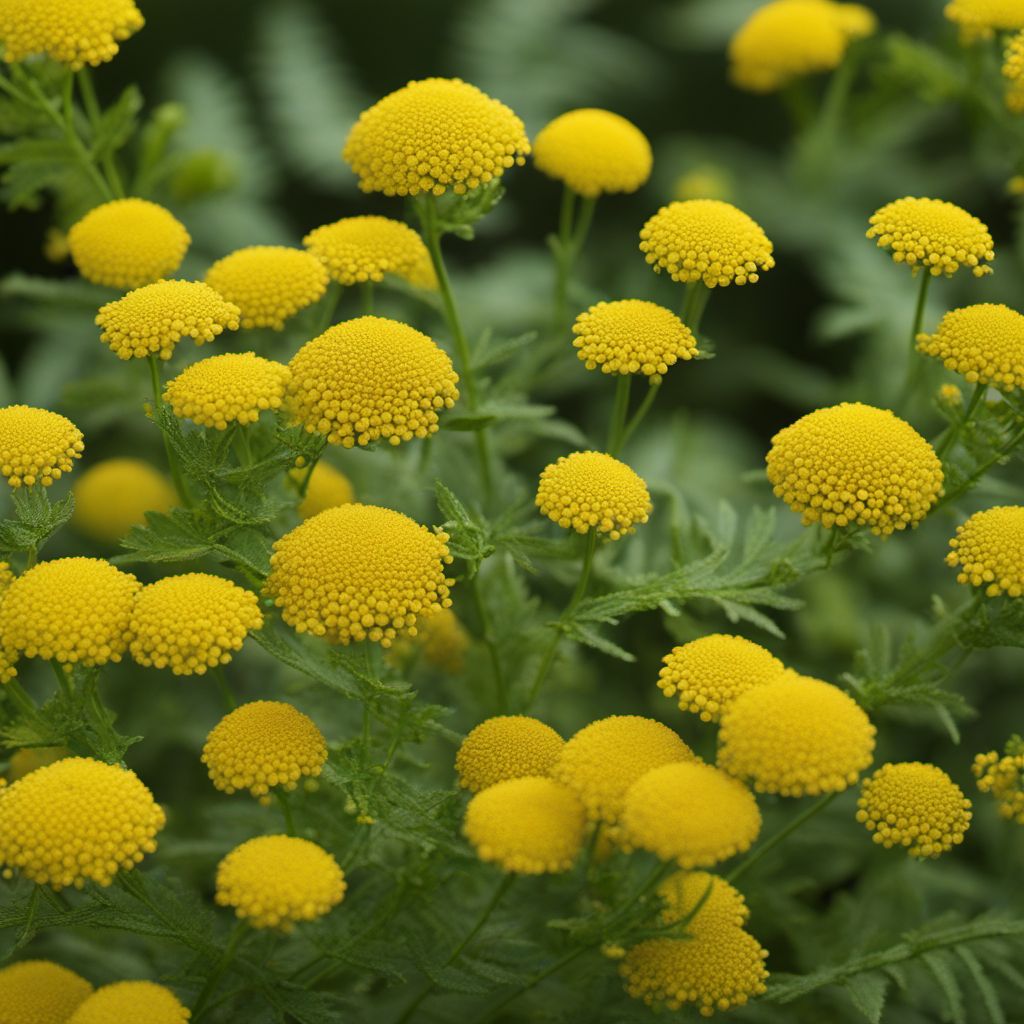
Ingredient
Tansy infusion leaves
The Herbal Elixir: Tansy Infusion Leaves
Tansy infusion leaves have a distinct aromatic scent and a slightly bitter taste, with hints of citrus and mint. They are small, feathery leaves that add a refreshing and herbal note to dishes. The leaves are often used to make herbal infusions, teas, or added to salads and soups for a touch of flavor and aroma.
Origins and history
Tansy infusion leaves have a rich history dating back to ancient times, where they were used for their medicinal properties. They were believed to have digestive and antispasmodic benefits and were used to treat various ailments. Tansy leaves were also used in traditional European cuisine, particularly in England and France, where they were added to dishes for their unique flavor and aroma.
Nutritional information
Tansy infusion leaves are low in calories and are a good source of vitamins A and C. They also contain essential oils and antioxidants that contribute to their potential health benefits.
Allergens
Some individuals may be allergic to tansy infusion leaves, particularly those who are sensitive to plants in the Asteraceae family, such as ragweed or chamomile.
How to select
When selecting tansy infusion leaves, look for fresh, vibrant green leaves without any signs of wilting or discoloration. Avoid leaves that have a strong, unpleasant odor, as this may indicate spoilage. If possible, choose organic leaves to ensure they are free from pesticides or other chemicals.
Storage recommendations
To store tansy infusion leaves, wrap them loosely in a damp paper towel and place them in a plastic bag or airtight container. Store them in the refrigerator for up to one week. Alternatively, you can dry the leaves by hanging them upside down in a cool, dry place. Once dried, store them in an airtight container away from direct sunlight.
How to produce
Tansy infusion leaves can be easily grown in a home garden or in pots. They thrive in well-drained soil and require full sun or partial shade. Regular watering and occasional pruning will help maintain their growth and vitality.
Preparation tips
Tansy infusion leaves can be used to make herbal infusions or teas by steeping a handful of leaves in hot water for 5-10 minutes. They can also be added to salads, soups, or stews to impart a unique flavor. Additionally, tansy infusion leaves can be used as a natural insect repellent by crushing the leaves and rubbing them on the skin.
Culinary uses
Tansy infusion leaves are commonly used in herbal infusions, teas, and traditional European dishes. They add a refreshing and herbal note to salads, soups, stews, and sauces. They can also be used as a natural insect repellent.
Availability
Tansy infusion leaves are commonly available in Europe, particularly in England and France. They can also be found in specialty herb stores or online.
More ingredients from this category » Browse all

Raspberry (red and yellow) infusion leaves
The Fragrant Tea Leaves

Hawthorn infusion leaves
"Nature's Heart Protector: Exploring the Benefits of Hawthorn Infusion Leaves"

Holy thistle infusion leaves
The Healing Power of Holy Thistle

Horse-chestnut infusion leaves
The Healing Power of Horse-Chestnut Infusion Leaves

Olive infusion leaves
The Essence of Olive Infusion Leaves

Lime infusion leaves
Zesty Citrus Elixir: Unveiling the Magic of Lime Infusion Leaves

Clary sage infusion leaves
The Aromatic Herb for Culinary and Medicinal Delights

Hearts ease infusion leaves
The Soothing Elixir of Hearts Ease

Clubmoss infusion leaves
The Ancient Elixir: Unveiling the Mysteries of Clubmoss Infusion Leaves

Hazelnut infusion leaves
Aromatic Hazelnut Elixir

Bitter orange infusion leaves
The Zesty Elixir: Unveiling the Power of Bitter Orange Infusion Leaves

Mallow infusion leaves
The Soothing Herb: Mallow Infusion Leaves